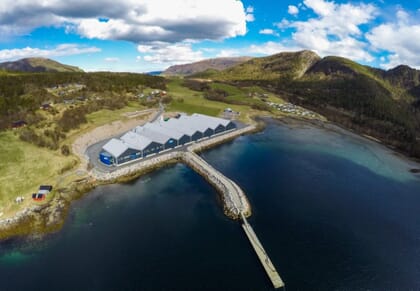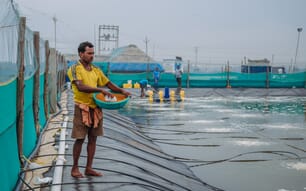"Disease is the greatest challenge facing this industry, both in financial terms and where its reputation with the public is concerned. Analysing and improving our knowledge of the salmon's environment will have significant economic potential. If this project enables us to produce knowledge and techniques that can be used to prevent disease, we will have taken several steps in the right direction," says lead scientist Sven Martin Jørgensen at the Norwegian Seafood Research Fund (FHF).

© Simen Langeteig
For the next 18 months, researchers at SINTEF Ocean will receive weekly samples of water from three different land-based salmon hatcheries: Bremnes Seashore, Lerøy Midt and Laksefjord. The researchers will analyse the samples to map bacterial communities in the hatchery water, and to find out what happens when there are outbreaks of bacteria that can lead to disease, in order to develop the warning system.
"This will enable hatcheries to take the necessary measures in good time to enable the fish to avoid problems," says SINTEF Ocean scientist Stine Wiborg Dahle.
The research project is called MONMIC and is financed by FHF and the aquaculture industry itself.
"The development of water recirculating systems has exploded in recent years, so we think that it is time to develop tools that will enable us to understand and optimise the health of fish in hatcheries by monitoring the bacterial community in the water," says Jørgensen.
Surprisingly little is known about the microbial environment in such facilities.
"For example, it is useful for us to know whether fish have been infected with disease before we move them into a recirculating aquaculture system (RAS), or transfer them between different sections of a hatchery. If the programme can give us an early heads-up, we may be able to reduce the extent of damage to their health. It will also be exciting to follow up how the biofilter develops in order to find out which groups are dominant," says Inger Lise Breivik, biology manager at Bremnes Seashore.

© Sintef
Water monitoring can also provide hatcheries with important information regarding the optimum water quality to produce robust and healthy fish. Appropriate decision-making about operating routines and implementing preventive measures can improve survival rates when the fish are transferred to ongrowing farms in the sea.
The project is unique in that this is the first time that microbial water quality will be measured using modern analytical techniques, with frequent sampling over such a long time in hatcheries under normal production conditions. The researchers have great hopes for the project.
"For example, in the future, a hatchery can be certain that it does not have dangerous bacteria in its water, because we will have been analysing it over an extended period of time and have full control over it, unlike the current situation. Today, sampling is carried out when fish become sick, and by then it is too late," says Dahle.
The researchers envisage companies subscribing to a monitoring programme, which would involve scientists analysing and interpreting water quality in hatcheries on a regular basis.
"We believe that the aquaculture industry is gradually becoming more aware of microbial water quality. It will be exciting to be part of this project, which can help to set a new standard for the industry," Dahle concludes.



